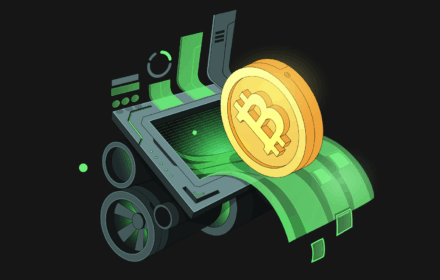Modern crypto investors are constantly looking for solutions that combine security, convenience, and the ability to work with a wide range of digital assets. Bybit Wallet is not just a tool for storing cryptocurrencies, but a full-fledged platform integrated into the Web3 ecosystem. In this review, we will explore its key features, usage methods, and advantages over competitors.
What is Bybit Wallet?
The digital wallet is designed for storing, transferring, and receiving cryptocurrencies, as well as for working with decentralized financial instruments. It is integrated into the Bybit platform and supports various blockchains, allowing users to easily manage their assets in a unified interface. One of the key advantages is compatibility with Bybit Web3, providing access to NFTs, DeFi, and other decentralized application capabilities.

The platform offers a high level of security, including two-factor authentication and protection against phishing attacks. Users can be confident in the safety of their funds and data confidentiality.
How to create a Bybit Wallet?
The registration and activation process takes just a few minutes. If you already have an account on Bybit, the wallet is created automatically; if not, standard registration on the platform is required. Then, you need to activate the crypto wallet in your account, set up security parameters, including a backup phrase and two-factor authentication.
After activation, the user can top up the balance in a convenient way—transfer funds from the Bybit exchange account, send cryptocurrency from another wallet, or use the built-in service for purchasing digital assets. After that, the crypto wallet is fully ready for use.
Functionalities of Bybit Wallet
The wallet offers users a range of useful tools for managing digital assets. Among the main features are:
- support for multi-chain transactions, allowing convenient operation with different blockchains;
- access to Web3 applications, including decentralized exchanges, NFT markets, and DeFi services;
- automated transactions that can be scheduled;
- built-in analytics for tracking asset profitability and analyzing financial operations.
These features make the wallet a convenient tool for managing digital assets without complex technical settings.
How to use Bybit Wallet?
No special skills are required to work with the wallet. To log in, simply open the “Wallets” section on the Bybit platform and select Bybit Wallet. To send funds, you just need to specify the amount, recipient address, and select the desired blockchain. You can top up the balance in several ways: through an internal transfer from the exchange account, P2P trading, or using an external wallet. Withdrawals are done similarly—users need to enter the details, choose the network, and confirm the transaction.
The wallet interface is intuitive even for beginners, and all operations are conducted quickly and securely.
Key Advantages of Bybit Wallet
Users choose the wallet for its convenience, security, and flexibility. Integration with the Bybit platform eliminates the need to use third-party applications, while two-factor authentication and cold storage system ensure a high level of protection.
One of the important advantages is the support for various blockchains, allowing the use of cryptocurrency in different ecosystems. Additionally, the internal fund transfer system helps minimize fees, and connecting to DeFi platforms opens up new earning opportunities.
Furthermore, users can benefit from features such as staking, automated transfers, and API integration for advanced asset management.
How to Protect Your Assets?
While the wallet provides a high level of security, users should take additional precautions. Never share your backup phrase with third parties, use complex passwords and two-factor authentication to protect your account. It is recommended to work with cryptocurrency only through official applications and websites, and avoid suspicious links.
Additionally, for storing significant amounts, it is better to use cold wallets to minimize the risks of hacking and asset loss.
Future of Bybit Wallet
Developers continue to expand the wallet’s functionality by adding new features. Upcoming updates are expected to include integration with additional blockchains, improved security mechanisms, and more convenient analytics tools. The Bybit team is also working on simplifying interaction with Web3, making working with decentralized services even easier.
Moreover, the launch of new investment tools is planned, including DAO initiatives, as well as expanding features related to providing liquidity and working with NFTs. All this makes Bybit Wallet a promising solution for active cryptocurrency users.

Conclusion
Bybit Wallet is a convenient, secure, and multifunctional tool for managing digital assets. Integrated with Web3, supporting multi-chain transactions, and offering reliable protection mechanisms. Knowing how to create a wallet and how to use it, users can easily manage assets, make transfers, and earn income from interacting with DeFi projects.
In the future, the wallet’s functionality will continue to expand, making it even more convenient and in demand.
 en
en  ru
ru  de
de  ar
ar  es
es  nl
nl  hi
hi  fr
fr  it
it  pt
pt  el
el 



